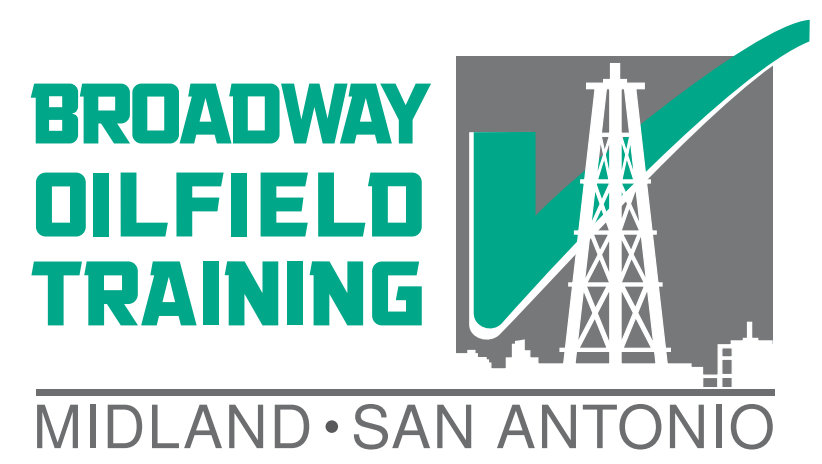What is a respiratory protection program?
A respiratory protection program is required to protect oilfield workers from inhaling potentially hazardous atmospheres. The consequences or inhaling toxic vapors or particles can include serious illness or death. By identifying all potential possible hazardous atmospheres, the respiratory protection plan then describes the selection and use of the proper respiratory protection for workers. For the reader’s convenience, a copy of paragraph C from OSHA 1910.134 providing a detailed list of the respiratory program requirements is included at the bottom of this post.
Many oilfield activities have the potential to expose workers to harmful air. Those activities should be listed as part of the respiratory protection plan. For each activity in the list it must be known which respiratory hazards may be present and during which step in the process. Once the toxic gasses and particles are known then their maximum potential concentration must also be determined.
The maximum concentration of a hazard must be known in relation to the relevant exposure limit in order to gauge the level of the health hazard and select an appropriate respirator with adequate protection.
All employees must be provided with the proper respirator, as well as a medical evaluation, fit test, and training. The fit test must be done yearly to determine that there is not excessive leakage around the respirator face piece and may only be done after the medical evaluation. Workers must also be trained and be proficient in all aspects of the use of their respirator. The program itself should also have measures to check that it is being implemented properly.
For a sample respiratory protection plan, see one put together by the Texas Division of Workers Compensation here.
Also make sure to review all 1910.134 respiratory protection requirements from OSHA.
Paragraph C from OSHA 1910.134:
1910.134(c)
Respiratory protection program. This paragraph requires the employer to develop and implement a written respiratory protection program with required worksite-specific procedures and elements for required respirator use. The program must be administered by a suitably trained program administrator. In addition, certain program elements may be required for voluntary use to prevent potential hazards associated with the use of the respirator. The Small Entity Compliance Guide contains criteria for the selection of a program administrator and a sample program that meets the requirements of this paragraph. Copies of the Small Entity Compliance Guide will be available on or about April 8, 1998 from the Occupational Safety and Health Administration’s Office of Publications, Room N 3101, 200 Constitution Avenue, NW, Washington, DC, 20210 (202-219-4667).
1910.134(c)(1)
In any workplace where respirators are necessary to protect the health of the employee or whenever respirators are required by the employer, the employer shall establish and implement a written respiratory protection program with worksite-specific procedures. The program shall be updated as necessary to reflect those changes in workplace conditions that affect respirator use. The employer shall include in the program the following provisions of this section, as applicable:
1910.134(c)(1)(i)
Procedures for selecting respirators for use in the workplace;
1910.134(c)(1)(ii)
Medical evaluations of employees required to use respirators;
1910.134(c)(1)(iii)
Fit testing procedures for tight-fitting respirators;
1910.134(c)(1)(iv)
Procedures for proper use of respirators in routine and reasonably foreseeable emergency situations;
1910.134(c)(1)(v)
Procedures and schedules for cleaning, disinfecting, storing, inspecting, repairing, discarding, and otherwise maintaining respirators;
1910.134(c)(1)(vi)
Procedures to ensure adequate air quality, quantity, and flow of breathing air for atmosphere-supplying respirators;
1910.134(c)(1)(vii)
Training of employees in the respiratory hazards to which they are potentially exposed during routine and emergency situations;
1910.134(c)(1)(viii)
Training of employees in the proper use of respirators, including putting on and removing them, any limitations on their use, and their maintenance; and
1910.134(c)(1)(ix)
Procedures for regularly evaluating the effectiveness of the program.
1910.134(c)(2)
Where respirator use is not required:
1910.134(c)(2)(i)
An employer may provide respirators at the request of employees or permit employees to use their own respirators, if the employer determines that such respirator use will not in itself create a hazard. If the employer determines that any voluntary respirator use is permissible, the employer shall provide the respirator users with the information contained in Appendix D to this section (“Information for Employees Using Respirators When Not Required Under the Standard”); and
1910.134(c)(2)(ii)
In addition, the employer must establish and implement those elements of a written respiratory protection program necessary to ensure that any employee using a respirator voluntarily is medically able to use that respirator, and that the respirator is cleaned, stored, and maintained so that its use does not present a health hazard to the user. Exception: Employers are not required to include in a written respiratory protection program those employees whose only use of respirators involves the voluntary use of filtering facepieces (dust masks).
1910.134(c)(3)
The employer shall designate a program administrator who is qualified by appropriate training or experience that is commensurate with the complexity of the program to administer or oversee the respiratory protection program and conduct the required evaluations of program effectiveness.
1910.134(c)(4)
The employer shall provide respirators, training, and medical evaluations at no cost to the employee.
(END OSHA)
Recommended Training: N-95 Fit Test, H2S Training, SafeLand Training,
Notice: Article is provided as is and for informational use only. Eagle Ford Training San Antonio, its owners, instructors, and affiliates hereto referred as the company shall have no liability for and you shall defend, indemnify and hold harmless from and against any claim loss demand, liability, obligation, and expense based upon any injury or damage, spill or pollution, product liability, or any other loss that may occur. The liability for the use of information is solely yours notwithstanding any act of error or omission by the company.
